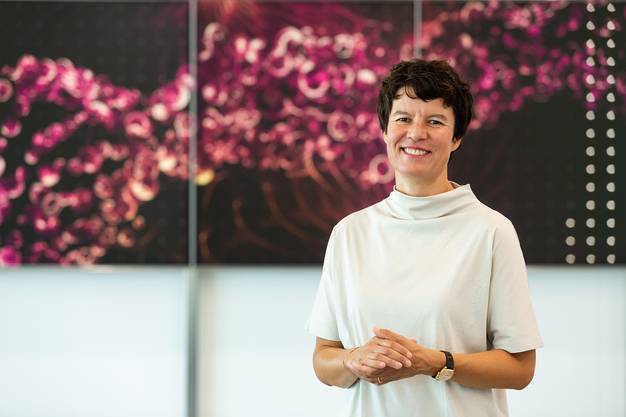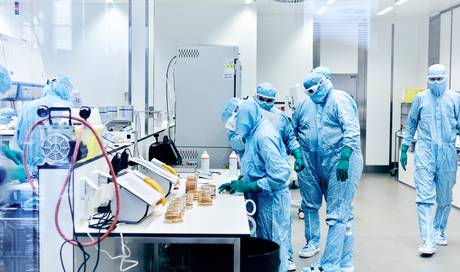If you enter the production facility for cell and gene therapies in Stein, this wall with the LED lights catches your eye. Wall of Hope called them Novartis CEO Vas Narasimhan when the plant opened a little over a year ago. For every batch of Kymriah that leaves Stein, a small lamp is lit. Each batch is designed to give a patient with blood cancer hope for a life without cancer.
–

 —-
—-To the right behind Constanze Günther, the plant manager for production for cell and gene therapies in Stein, the LED lights can be seen. Every time a batch of Kymriah leaves the factory, another lamp is lit.
© Zvg / Novartis / Aargauer Zeitung
—
—
Kymriah is part of the latest generation of treatments manufactured by Novartis. For this purpose, blood is taken from the patient and then processed in stone so that they can destroy the cancer cells. The cells are then transported back to the hospital and injected into the patient there. This process takes around a month. Around 15 teams of two are involved in each batch throughout the entire process. All very complex.
–

 —-
—-To date, around 320 people are employed in the production of cell and gene therapies at the Stein plant. It should be up to 450 if everything goes according to the Novartis plans.
© Zvg / Novartis / Aargauer Zeitung
—
—
But pharmaceutical multinationals such as Novartis see the future in such treatments. This is called personalized medicine. Kymriah is not a drug, but a therapy. If successful, one treatment is sufficient and the blood cancer is defeated.
According to the Novartis pivotal study, 73 percent of children and young adults with acute lymphoblastic leukemia were cancer-free six months after treatment, and 65 percent of patients with diffuse large B-cell lymphoma who had responded to treatment suffered within one Year no relapses. Current studies have even shown improved safety data for both indications with the same effectiveness.
Now it is rare diseases that Kymriah is used against. Neither health insurers nor Novartis provide precise information on how often it was administered in Switzerland. At the end of last week, 128 lights were lit on the “Wall of Hope”. So 128 therapies have left the factory. But Stein has not only supplied Switzerland, but all of Europe since summer 2020.
–
What is health insurance paying for Kymriah?
Personalized therapies like Kymriah are very expensive. The list price is around 370,000 francs. However, no insurance pays that much. However, neither the health insurance companies organized in the Curafutura Association nor those of Santésuisse are allowed to announce the price. Martina Weiss, Head of Price Negotiations at the HSK (Curafutura) purchasing group, says:
–
